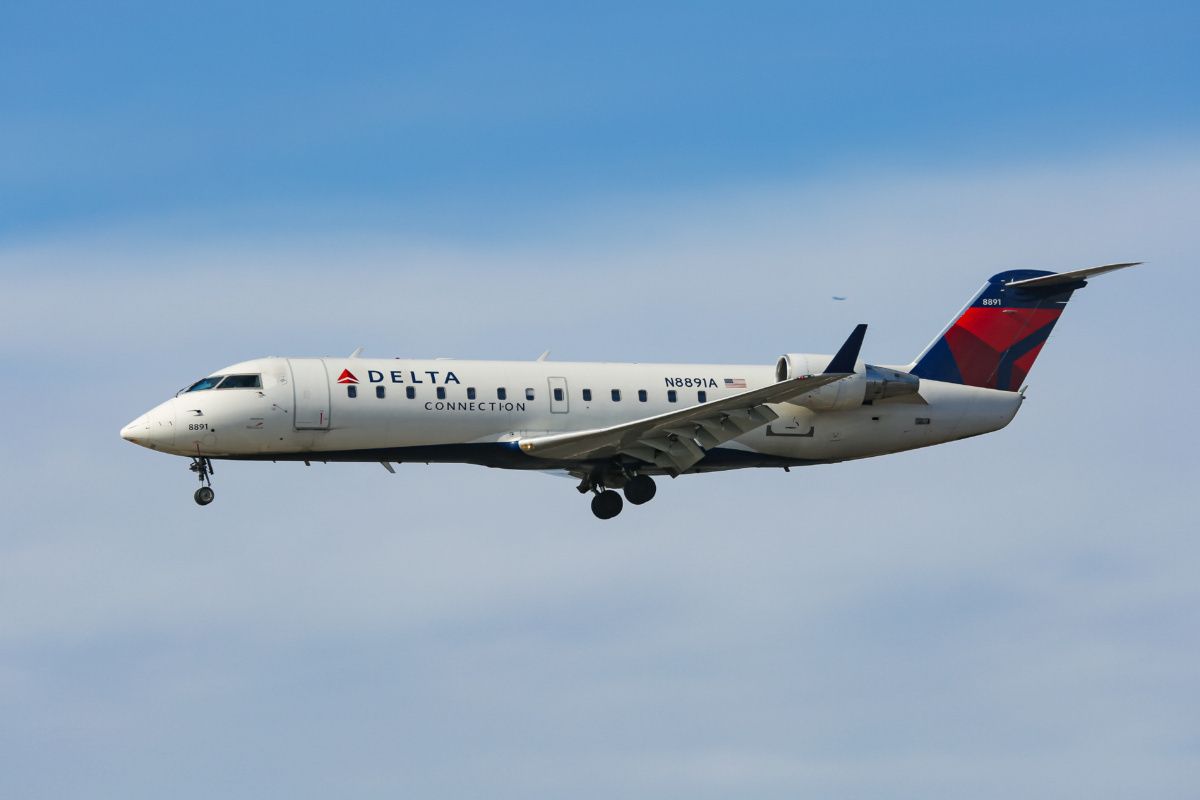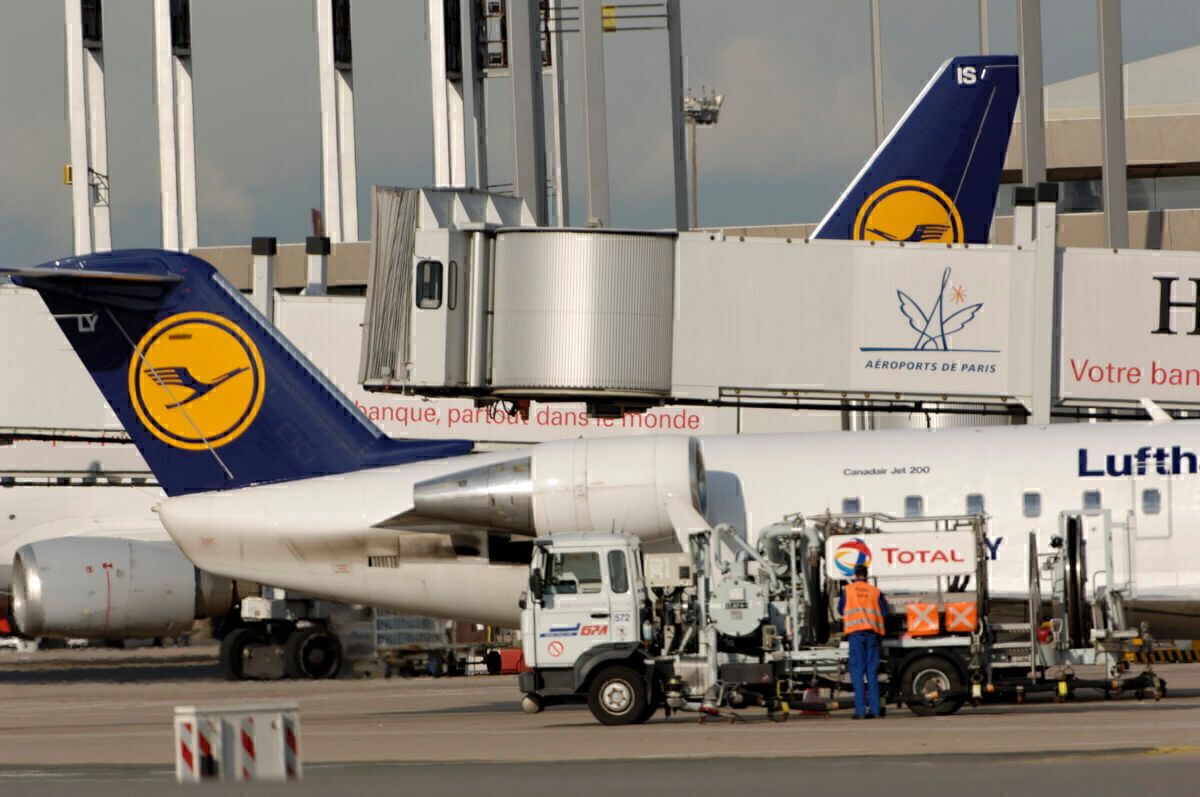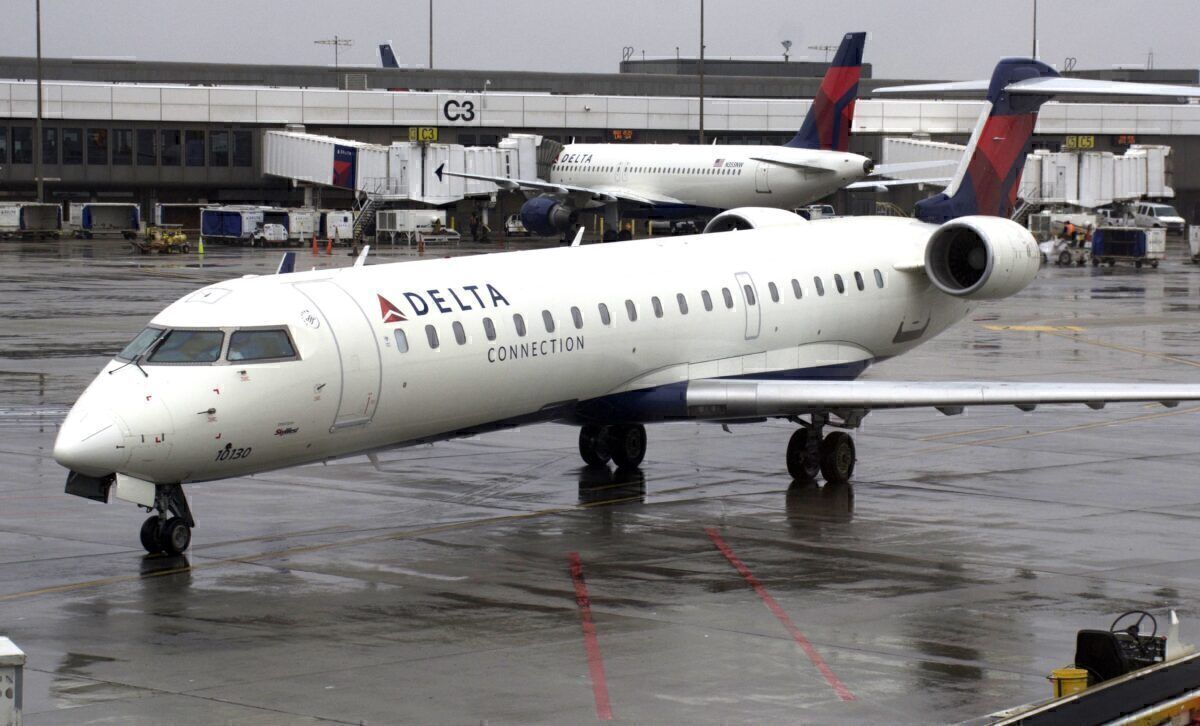Originally known as the Canadair CRJ100 and CRJ200, the Canadian built regional jets were based on American aviation inventor Bill Lear's LearStar 600 concept. Built as a private jet, the Bombardier Challenger 600 typically had nine seats but could be configured with as many as 19. Let's take a look at the differences between the Bombardier CRJ100 vs CRJ200.
When Bombardier bought Canadair in 1986, the Montreal-headquartered company decided to see if they could manufacture a stretched version of the aircraft to be suitable as a regional airliner. The first CRJ100 made its maiden flight in May 1991 and entered commercial service with German national flag carrier Lufthansa 17 months later.
The CJR100 was faster than turboprops
Looking to compete with turboprop aircraft like the Fokker 50, the ATR-42, and the Bombardier Dash 8-300, Bombadier thought that passengers would prefer to fly in a faster plane. And while they knew it would be more expensive to operate than a turboprop, the cost differential would be balanced by its higher productivity rate.
The first CRJ100s were soon followed by the CRJ100 ER, which increased the plane's range by 20%. This was then advanced again with the CRJ100 LR, allowing the plane to fly 40% further than the original CRJ100. The 50-seat CRJ100 was fitted with General Electric CF34-3A1 engines capable of generating up to 41.0 kN (4,180 kg / 9,220 lbf) of thrust, with the LR version having a range of 1,650 nautical miles ( 3,056 kilometers).
The CRJ200 had slightly different engines
To provide its customers with the latest aerospace advances, Bombardier developed the CRJ100 to become the CRJ200. Everything about the two planes was identical except that the 200 version had more fuel-efficient engines and a slight increase in cruise altitude and speed. The new engines were manufactured by General Electic and designated as the CF34-3B1 rather than the original CF34-3A1.
When the CRJ100 was introduced, airlines in the United States shifted towards a hub and spoke network following the 1978 Airline Deregulation Act. Because of the CRJ100 and CRJ200s small size, they were more suitable for being deployed on secondary market routes than traditional narrowbody jets.
In Europe, Germany's Lufthansa CityLine operated according to aviation enthusiast website Planespotters.net 11 CRJ100s and 37 CRJ200s while French regional airline Brit Air had 23 Bombardier CRJ-100s in its fleet of 88 aircraft according to Planespotters.net.
The CRJ700 was the next evolution
The CRJ100 and the CRJ200 went on to become not only a commercial success for Bombardier but also spawned the developments of the 70-seat CRJ700, which is still being flown by many American regional airlines. In 2006 Bombardier decided to terminate the CRJ100/200 and concentrate on the larger CRJ700 and its turboprop aircraft.
Meanwhile, over the years, the cost of fuel and more advancements in aircraft technology has led to airlines retiring their CJR100/200 aircraft in favor of more modern fuel-efficient planes. There you have it, the CRJ100 and CRJ200 were virtually on the same plane except for the modifications made to the General Electric CF34-3A1 engine.
As far as we are aware, SkyWest Airlines still operates some CRJ200s for its partner airline. If you can think of anyone else still flying the CRJ100/200, please let us know in the comments.



